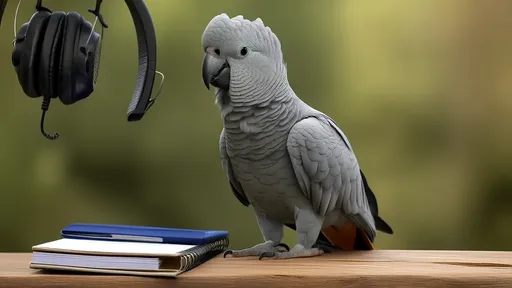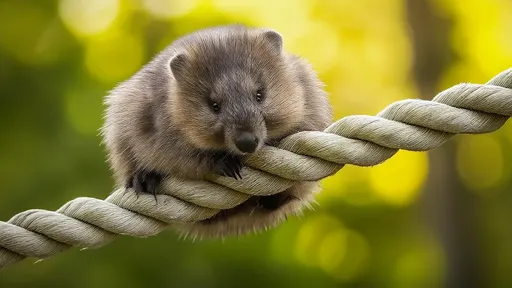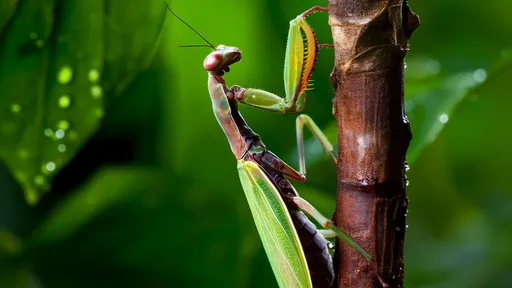The melodious chirps and whistles of a cockatiel can transform any home into a lively aviary. These charming parrots, native to Australia, possess a natural inclination for vocalization, making them ideal candidates for song training. Unlike larger parrot species known for complex speech mimicry, cockatiels excel in tonal patterns and rhythmic sequences. Their ability to pick up tunes and even create unique variations makes song training both an art and a science. The process requires patience, consistency, and an understanding of avian psychology. Owners who invest time in this rewarding endeavor often find their bond with the feathered companion deepening through shared musical language.
Understanding the cockatiel's vocal range is fundamental before embarking on training. These birds typically produce sounds within two to four kHz, with males being more vocally expressive than females. Young cockatiels begin experimenting with sounds as early as three months old, entering their most impressionable learning phase between six to twelve months. This window presents the golden opportunity for introducing melodies. Seasoned aviculturists note that cockatiels respond exceptionally well to clear, high-pitched tones resembling their natural contact calls. The birds' syrinx (vocal organ) allows for remarkable pitch control, enabling them to match human whistled notes with surprising accuracy when properly guided.
Creating the right acoustic environment proves crucial for effective training sessions. Cockatiels learn best in quiet spaces free from competing noises like television or traffic sounds. Many trainers recommend using a dedicated room with soft lighting where the bird feels secure enough to experiment with new sounds. The training area should contain familiar perches and toys to establish comfort, as stress inhibits learning. Some enthusiasts report better results when conducting sessions at consistent times daily, preferably during the bird's naturally active morning hours. The trainer's position relative to the bird matters too - maintaining eye level contact without looming overhead helps build trust during these vulnerable moments of attempted mimicry.
The methodology behind teaching specific tunes involves breaking down songs into manageable segments. Rather than attempting an entire melody at once, successful trainers focus on perfecting two-to-three note sequences before progressing. This technique, known as phrase training, allows the bird to master small components that eventually connect fluidly. Repetition forms the backbone of this process, with ideal sessions lasting fifteen to twenty minutes to prevent frustration. Observing the cockatiel's body language provides critical feedback - head tilting, crest raising, and focused attention indicate engagement, while preening or distraction suggest the need for a break. Many birds benefit from hearing the same phrase multiple times from recording devices between live sessions, reinforcing the auditory pattern.
Positive reinforcement techniques dramatically enhance the learning curve. When the bird produces even approximate versions of desired sounds, immediate rewards create neurological connections between the action and pleasure. Preferred treats vary among individuals but commonly include millet sprays, small fruit pieces, or affectionate head scratches. The timing of rewards proves equally important - delays longer than three seconds may fail to register the connection. Some trainers use clicker devices to mark precise moments of correct vocalization before delivering treats. This conditioning method, borrowed from broader animal training practices, helps shape increasingly accurate renditions through successive approximations of the target melody.
Seasoned cockatiel owners develop an ear for interpreting their bird's vocal experiments. Young learners often produce hybrid sounds blending heard phrases with innate calls during the discovery phase. These creative mashups shouldn't be discouraged but rather gently guided toward the target tune. Interestingly, many cockatiels develop signature styles even when learning standardized melodies, adding personal flourishes that reflect individual personality. Some birds insert extra trills between notes while others alter rhythm patterns slightly. These variations shouldn't necessarily be corrected unless they substantially deviate from the core melody, as they represent the bird's artistic expression within the learned framework.
The social dimension of song learning cannot be overstated. Cockatiels are flock creatures that naturally mimic sounds to strengthen social bonds. Trainers who whistle or sing along with their birds often achieve faster progress than those relying solely on recorded sounds. This duet-style interaction taps into the species' innate communicative behaviors. Some particularly talented cockatiels begin initiating "practice sessions" by whistling to get their owner's attention, demonstrating how the activity becomes integrated into their social routine. Birds housed with vocal companions sometimes learn from each other, creating fascinating scenarios where melodies propagate through avian social networks.
Advanced training introduces the concept of vocal chains, where the bird learns to connect multiple phrases into complete songs. This stage requires careful sequencing, ensuring each segment flows naturally into the next from the bird's perspective. Trainers often notice their cockatiels developing preferred song segments that serve as starting points for vocal sessions. These anchor phrases help the bird enter the proper mindset for more challenging sequences. Some exceptional individuals eventually learn to respond to verbal cues, performing specific songs when prompted - a feat demonstrating remarkable cognitive processing and memory retention in these small psittacines.
The journey of song training inevitably encounters plateaus and regressions. Seasonal hormonal changes, environmental stressors, or simple mood variations can temporarily disrupt a bird's performance. Experienced trainers recommend maintaining consistency during these phases without applying pressure. Forcing sessions when the bird appears disinterested often backfires, potentially creating negative associations with the activity. Many cockatiels cycle through periods of vocal experimentation and quiet observation, with sudden breakthroughs following apparent stagnation. Documenting progress through audio recordings helps owners recognize gradual improvements that might otherwise go unnoticed during daily interactions.
Cultural variations in cockatiel song preferences emerge across different regions. Australian owners report their birds often incorporate elements of native bird calls into learned tunes. European trainers note cockatiels adapting particularly well to classical music motifs, while North American birds frequently pick up on television jingles or smartphone notification sounds. This adaptability speaks to the species' remarkable auditory plasticity. Some innovative owners have successfully taught their cockatiels to mimic simple folk instruments like whistles or ocarinas through duet performances, expanding the possibilities of human-avian musical collaboration.
The health benefits of song training manifest in multiple dimensions. Mentally stimulated cockatiels show fewer behavioral issues like feather plucking or repetitive movements. The cognitive challenge of learning and recalling complex sequences appears to enhance neural pathways, potentially supporting longevity. Physically, the controlled breathing patterns developed during precise vocalization promote respiratory health. On the human side, the shared activity reduces owner stress while creating measurable drops in blood pressure during sessions. This mutual therapeutic effect underscores the profound interspecies connection facilitated by musical exchange.
Ethical considerations should guide all song training endeavors. Pushing birds beyond their natural capacities for human amusement violates the spirit of compassionate ownership. Each cockatiel possesses unique vocal potential - while some may master elaborate concert pieces, others express themselves through simpler tunes with equal charm. Respecting individual limitations while celebrating small victories fosters a healthy training dynamic. The ultimate goal isn't creating a perfect avian performer, but rather nurturing a fulfilling communication channel that enriches both the bird's life and the human caretaker's experience.
As sunset approaches in homes worldwide, cockatiels often treat their families to twilight serenades - a blend of mastered melodies and improvisational riffs. These moments capture the essence of song training's success: not flawless reproduction of human music, but the joyful co-creation of interspecies art. The scratched notes, the occasional off-key passages, and the spontaneous variations all contribute to a living musical dialogue that transcends simple mimicry. In teaching our feathered companions to sing, we inadvertently learn to listen more deeply - to their voices, their needs, and the beautiful unpredictability of nature's rhythms.

By /Jun 28, 2025

By /Jun 28, 2025

By /Jun 28, 2025

By /Jun 28, 2025

By /Jun 28, 2025

By /Jun 28, 2025

By /Jun 28, 2025

By /Jun 28, 2025

By /Jun 28, 2025

By /Jun 28, 2025

By /Jun 28, 2025

By /Jun 28, 2025

By /Jun 28, 2025

By /Jun 28, 2025

By /Jun 28, 2025

By /Jun 28, 2025

By /Jun 28, 2025